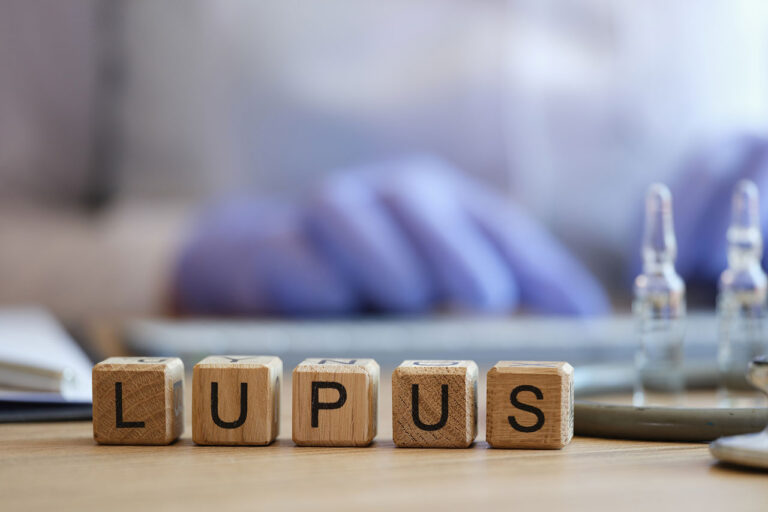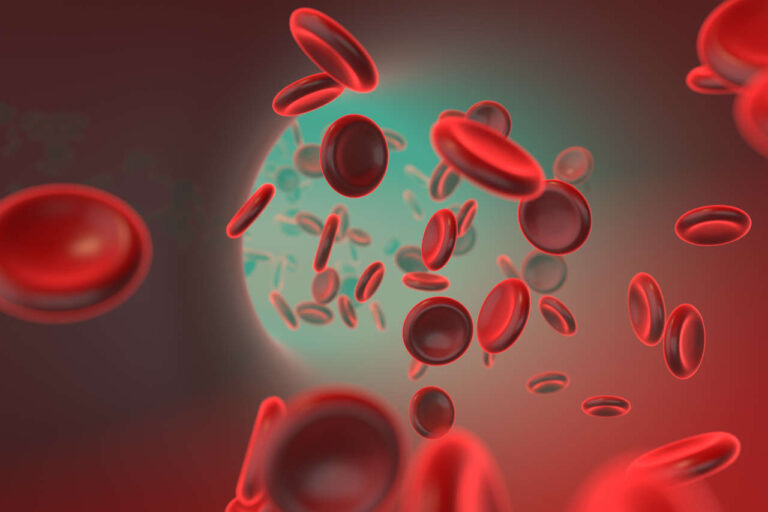
Intravenous immunoglobulin (IVIG) is typically recommended as an alternative treatment for autoimmune neutropenia when first-line treatments like growth factors (such as granulocyte colony-stimulating factor [G-CSF]) and antibiotics fail to improve the patient’s condition.
Get Financial Assistance
Autoimmune neutropenia (AIN) is a rare medical condition that can affect both children and adults. This autoimmune condition makes it difficult for the body to fight against potentially lethal infections due to the decreased neutrophil count (less than 1,500/microliter) in the blood.
If your doctor has suggested IVIG therapy to you or your child, it is vital to understand how this therapy works. This article explains everything you need to know about IVIG and how it helps patients with autoimmune neutropenia.
Autoimmune Neutropenia (AIN): Overview
Autoimmune neutropenia is a rare autoimmune condition in which a patient has a low neutrophil count. This mainly happens due to the autoantibodies produced by the immune system that target and destroy the healthy neutrophils.
Neutrophils are a type of white blood cell that helps the body fight infections by killing pathogens like bacteria and fungi. However, the elimination of neutrophils by immune cells reduces the total number of this type of cell in the bloodstream. When these cells are low, people with neutropenia are more likely to contract infections than healthy individuals.
Autoimmune neutropenia is classified as primary or secondary depending on what exactly is causing the low neutrophil level. For instance:
Primary Autoimmune Neutropenia
This occurs as a standalone disorder, meaning it is caused by the abnormal immune attack and is primarily common in children and toddlers. Primary autoimmune neutropenia affects around 1 in 100,000 children under 10.
Secondary Autoimmune Neutropenia
This type is mostly common in older adults and occurs as a secondary effect of other underlying causes, like autoimmune disorders (such as lupus or rheumatoid arthritis), or even blood cancers (in rare cases) that prompt your immune system to destroy the neutrophils.
How Does IVIG Help Patients With Autoimmune Neutropenia?
IVIG is a treatment made from the blood plasma of thousands of healthy donors. This plasma contains immunoglobulins (antibodies) that are collected, purified, and given to patients through a vein (intravenously).
The antibodies help to calm down the overactive immune system in patients with autoimmune neutropenia. IVIG helps in several ways:
1. It Suppresses Autoantibody Production
Since the immune system mistakenly attacks healthy cells, like neutrophils, by producing autoantibodies, IVIG suppresses the production of these abnormal antibodies to prevent further damage.
2. It Prevents the Binding of Autoantibodies to the Target Cells
The immunoglobulins provided through the IVIG therapy bind to the autoantibodies and prevent them from binding to the surface receptors of the neutrophil cells, helping to protect these essential cells.
3. It Reduces Inflammation
IVIG also has anti-inflammatory effects. It helps reduce swelling and tissue damage that can happen when the immune system is in overdrive.
4. It Supports the Immune System
Because neutropenia puts people at higher risk of infections, IVIG can provide extra antibodies to help the body fight off germs.
5. It Temporarily Boosts Neutrophil Count
In many cases, IVIG temporarily increases the number of neutrophils, which can reduce the risk of infections and related complications.
Speak to a Specialist
About Copay AssistanceHow Effective Is IVIG for Autoimmune Neutropenia Patients: Clinical Evidence
The research studies on the use of IVIG for treating autoimmune neutropenia are limited. However, several small clinical studies and case reports suggest that IVIG may be a safe and effective treatment option for childhood autoimmune blood disorders, including neutropenia.
For instance, a study published in the “American Journal of Medicine” reported that six infants under two with severe infections and persistent neutropenia (ANC 300/mm³) were treated with IVIG (1 g/kg) until counts exceeded 1,000/mm³. The neutrophil boost lasted about 14 days, which indicated that IVIG can result in rapid, temporary neutrophil recovery in severe infant neutropenia.
Similarly, another study showed that 16 children with autoimmune blood disorders — including two with autoimmune neutropenia — responded well to IVIG treatment. These patients received between 1 and 50 IVIG infusions over a period of 1 to 30 months. Likewise, a case report of a patient with Hodgkin’s disease who developed autoimmune neutropenia showed a temporary increase in neutrophil level after high-dose IVIG (instead of steroids).
Though the overall response of IVIG is generally short-lived, it provides an opportunity to treat severe underlying infections.
Who Needs IVIG for Autoimmune Neutropenia?
IVIG is not always the first treatment option. Many people with mild neutropenia do well with close monitoring and good hygiene practices. However, IVIG may be recommended if:
- The person has frequent or serious infections
- The neutrophil count is extremely low
- Other treatments, like G-CSF, antibiotics, or steroids, are not working or are not suitable
- Neutropenia is linked with other autoimmune diseases or immune system disorders
Doctors will usually perform blood tests, monitor infection history, and consider overall health before deciding if IVIG is the right option.
What Can You Expect During IVIG Treatment?
Before you receive an IVIG treatment, your doctor will assess your health and check for any allergies or kidney issues. Blood tests may be done to measure immune levels and neutrophil counts.

During Treatment
IVIG is given through a drip (IV) over several hours. Most people tolerate it well, but it must be infused gradually to avoid infusion-related side effects. Depending on how your body responds, you may receive IVIG once every few weeks or months.
After Treatment
It may be possible that you feel tired or experience mild side effects like headaches, chills, fever, or nausea after the IVIG session. But these side effects are usually short-lived. You can consult your healthcare provider if any of the symptoms mentioned above persist or if you experience other new symptoms.
Ask About IVIG Home Infusion
What Is the Recommended Dose of IVIG for Severe Autoimmune Neutropenia?
For patients with severe autoimmune neutropenia, IVIG may be given at up to 2 g/kg weekly (single or divided doses) for 4 weeks. Responders may receive the same dose upon relapse.
Takeaway
While IVIG is not typically the first-line treatment for autoimmune neutropenia, it can significantly reduce the risk of serious infections by improving the body’s immune response and offering temporary support to increase neutrophil levels. Because its effects are usually short-term, long-term use should be carefully evaluated and monitored. If you’re considering IVIG as part of your treatment plan, it’s essential to thoroughly discuss it with your healthcare provider to weigh the potential benefits, risks, and alternatives based on your condition.
REFERENCES:
- Hilgartner, M. W., & Bussel, J. (1987). Use of intravenous gamma globulin for the treatment of autoimmune neutropenia of childhood and autoimmune hemolytic anemia. The American Journal of Medicine, 83(4), 25-29. https://doi.org/10.1016/0002-9343(87)90547-X
- Jinca, C., Serban, M., Ursu, E., Munteanu, A., & Arghirescu, S. (2021). Primary autoimmune neutropenia of infancy and childhood in a cohort of patients from western Romania. Experimental and Therapeutic Medicine, 21(3). https://doi.org/10.3892/etm.2021.9711
- Neutrophil antibody specificity in different types of childhood autoimmune neutropenia. (1999). PubMed. https://pubmed.ncbi.nlm.nih.gov/10477706/
- Ig Governance – Criteria for the clinical use of immunoglobulin in Australia. (n.d.). https://www.criteria.blood.gov.au/MedicalCondition/View/2509
- Kurtzberg, J., Friedman, H. S., Chaffee, S., Falletta, J. M., Kinney, T. R., Kurlander, R., Matthews, T. J., & Schwartz, R. S. (1987). Efficacy of intravenous gamma globulin in autoimmune-mediated pediatric blood dyscrasias. The American Journal of Medicine, 83(4), 4–9. https://doi.org/10.1016/0002-9343(87)90544-4
- Chaudhari, P. M., & Mukkamalla, S. K. R. (2023, January 15). Autoimmune and chronic neutropenia. StatPearls – NCBI Bookshelf. https://www.ncbi.nlm.nih.gov/books/NBK560901/#:~:text=Autoimmune%20neutropenia%20(AIN)%20is%20a,present%20on%20IgG%20Fc%20receptors.












